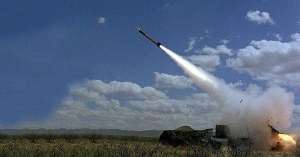The slow disappearance of glaciers is accompanied by a whole procession of bigger and smaller problems. The melting of the Greenland ice sheet (mainly caused by global warming) is at the origin of the rise in the ground level of the huge arctic island and the creation of new islets, the Technical University of Denmark (DTU) has indicated. "Due to the loss of mass in Greenland, the earth is rising," DTU researcher Danjal Longfors Berg, lead author of a study published in the journal "Geophysical Research Letters," told AFP. According to Danish scientists, Greenland's bedrock has grown by an average of 20 cm over the past 10 years, from 2013 to 2023, an "alarming" phenomenon, he added. However, the rise in ground level is less significant the further away an active glacier is. Measured by 61 GPS stations located along the coasts, the uplift, which could reach two meters per century, also reveals new islets around the autonomous Danish territory, which is 2.2 million square kilometers. "In Greenland, the mother earth is rising faster than the ocean level is rising, and in some places when the land rises, it exceeds the sea level and then we have these new islands," explained Longfors Berg. In the long term, "the total surface of Greenland will increase (...) but in the beginning, maybe there are only a few stones", he emphasized. According to a study published in early 2023, half of the glaciers on Earth will disappear by the end of the century due to climate change. Their melting contributes to sea level rise. In Greenland, "there are certain regions where all this lost mass will never be recovered, even if we have a small ice age," said the researcher.
Melting glaciers - new problems
O.D.
English Section / 8 februarie 2024
























































